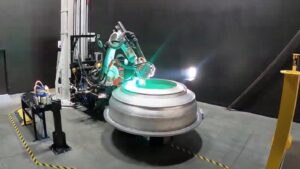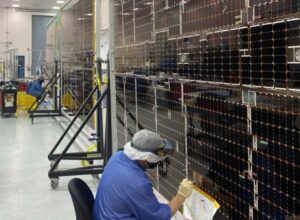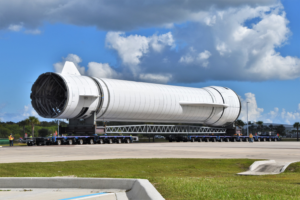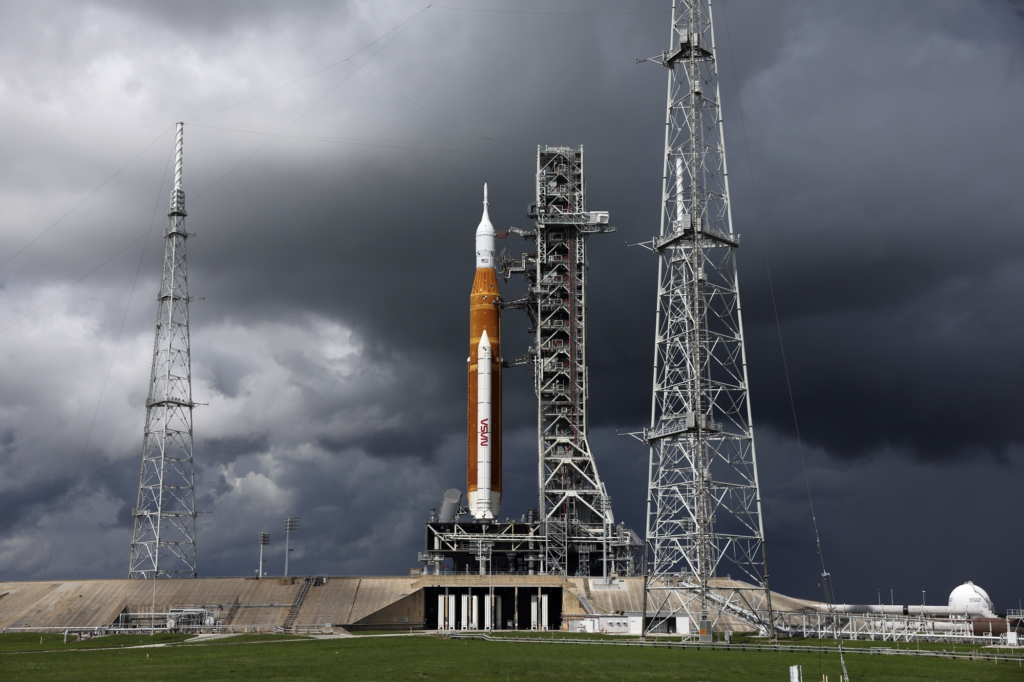
More SLS Delays Due To Tropical Storm Nicole
So far since around the start of summer, the Space Launch System has had no luck launching apart of the Artemis 1 mission. Between liquid hydrogen leaks, launch period requirements, weather, and more, the rocket has been rolled to and from the Vehicle Assembly Building quite a few times now. Unfortunately, it looks as if this theme has no plan of stopping with the agency announcing new delays.
Specifically, just yesterday NASA announced that they decided to re-target a launch for the Artemis I mission to Wednesday, Nov. 16, as part of the agency’s hurricane preparedness protocol in regard to Tropical Storm Nicole. While this is only a two day delay from the previous launch date on the 14th, the bigger concern is whether or not this weather will cause additional problems that force the launch date back further.
NASA highlights that the rocket is built to withstand both strong winds and rain. This being said, the incoming weather is doing this first launch no favors and adds to the list of complications SLS has faced. Here I will go more in-depth into the delay, SLS’s ability to withstand a hurricane, what to expect in the coming weeks, and more.
New Delay & Hurricane

After being rolled back out to the launch pad just days ago, NASA was faced with the decision of whether or not they should roll the rocket back into the VAB and ensure its safety during the storm, or keep it on the pad. Yesterday NASA tweeted saying, “As teams continue to monitor Tropical Storm Nicole, we’ve decided to re-target the launch for the #Artemis I mission to Wednesday, Nov. 16, pending safe conditions for employees to return to work.”
Specifically, right now, NASA is monitoring Tropical Storm Nicole and has decided to re-target a launch for the Artemis I mission for Wednesday, Nov. 16, pending inspections after the storm has passed. The agency pointed out that adjusting the target launch date will allow the workforce to tend to the needs of their families and homes, and provide sufficient logistical time to get back into launch status following the storm. In addition, Kennedy currently is in a HURCON (Hurricane Condition) III status, which includes securing facilities, property and equipment at the center, as well as briefing and deploying the “ride-out” team. As part of NASA’s hurricane preparedness protocol, a “ride-out” team includes a set of personnel who will remain in a safe location at Kennedy throughout the storm to monitor centerwide conditions, including the flight hardware for the Artemis I mission. Kennedy will release non-essential personnel at the HURCON II status as the agency continues to prioritize its employees in the Kennedy area.
A few days ago on the 6th, based on expected weather conditions and options to roll back ahead of the storm, the agency determined the safest option for the launch hardware was to keep the Space Launch System (SLS) rocket and Orion spacecraft secured at the pad. The SLS rocket is designed to withstand 85 mph (74.4 knot) winds at the 60-foot level with structural margin. Current forecasts predict the greatest risks at the pad are high winds that are not expected to exceed the SLS design. The rocket is designed to withstand heavy rains at the launch pad and the spacecraft hatches have been secured to prevent water intrusion. In preparation for the storm, teams have powered down the Orion spacecraft, SLS core stage, interim cryogenic propulsion stage, and boosters. Engineers have also installed a hard cover over the launch abort system window, retracted and secured the crew access arm on the mobile launcher and configured the settings for the environmental control system on the spacecraft and rocket elements. Teams also are securing nearby hardware and performing walkdowns for potential debris in the area.
Teams are poised to resume work as soon as weather and Kennedy center status allows. Once back on-site, technicians will perform walkdowns and inspections at the pad to assess the status of the rocket and spacecraft as soon as practicable.
Artemis 1 Launch Date
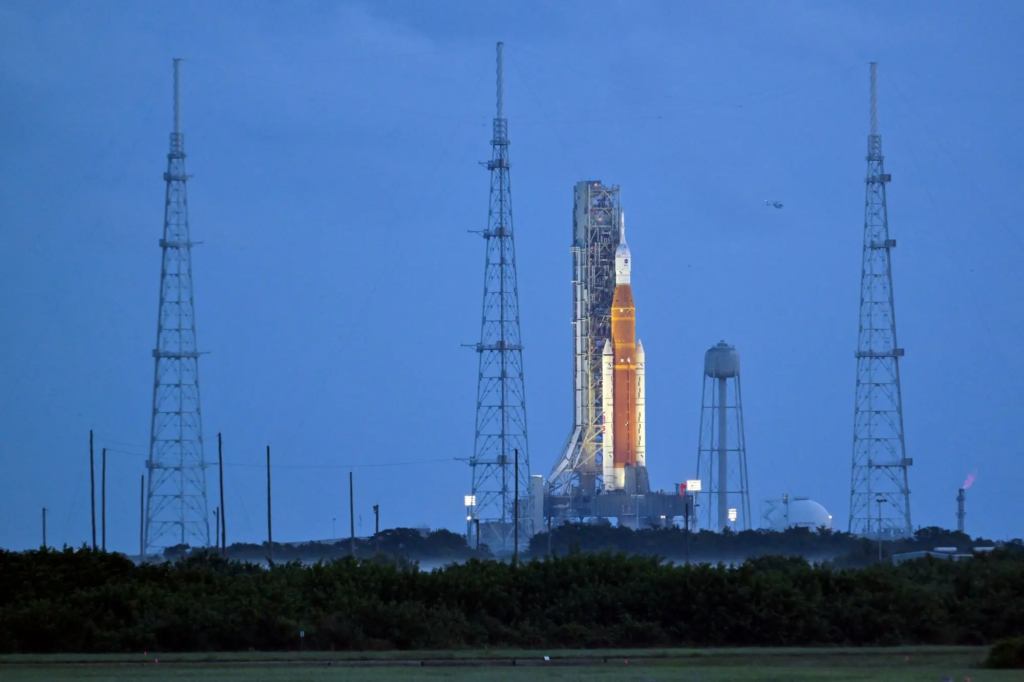
Now that we know more about the incoming storm and some of the preparations NASA is making, we can take a closer look at this delay, and the possibility of the launch being pushed back further. A launch during a two-hour window that opens at 1:04 a.m. EST on Nov. 16 would result in a splashdown on Friday, Dec. 11. If needed, NASA has a back-up launch opportunity on Saturday, Nov. 19, and will coordinate with the U.S. Space Force for additional launch opportunities. The agency continues to rely on the most up to date information from the National Oceanic and Atmospheric Administration, U.S. Space Force, and the National Hurricane Center throughout its evaluations and continues to closely monitor conditions for the Kennedy area.
However, when Artemis I is ready to launch, a range of personnel from NASA, industry, and several international partners will be poised to support the mission. Before they get to launch day, the alignment of the Earth and Moon will determine when the Space Launch System (SLS) rocket with the uncrewed Orion spacecraft atop it can launch, along with several criteria for rocket and spacecraft performance. This recent delay makes the already small launch period even closer. Currently, NASA is within the November launch period that stretches from the 12th to the 27th. With yesterday’s delay and an additional 4 days that no launches are available within this period, SLS will not have a lot of room for error. If weather and or other factors delayed the launch and missed this November period, they would have to wait almost two weeks until the 9th of December. All of which is determined by the Moon’s position, the skip entry technique, ensuring Orion is not within darkness on its trip for more than 90 minutes, and making sure Orion splashes down during the day.
Focusing back on the incoming storm, late last night NASA tweeted again mentioning, “Beginning at 2 am EDT on Wednesday, November 9, Kennedy Space Center will enter into a HURCON II.” As of right now, the agency has confirmed that they are in HURCON II. The hurricane condition (HURCON) is an alert scale that signifies when specific preparations should be made for an approaching hurricane. It’s important to understand that the onset of sustained winds occurs earlier than landfall, which is when the center of the storm reaches land. This includes HURCON 1 through 4. The lower the HURCON alert the closer the storm is and the fewer personnel and activities going on at the site and facilities.
While this storm is by no means ideal, NASA has a plan in place and is confident that the first launch of SLS apart of Artemis I will happen on the 16th. The primary operation goal of this mission is to assure a safe crew module entry, descent, splashdown, and recovery. In addition to sending Orion on its journey around the Moon, SLS will carry 10 small satellites that will perform their own science and technology investigations. The first in a series of increasingly complex missions, Artemis I is expected to provide a foundation for human deep space exploration and demonstrate NASA’s commitment and capability to extend human existence to the Moon and beyond prior to the first flight with crew on Artemis II.
The agency points out that Artemis I is foundational to the space economy, fueling new industries and technologies, supporting job growth, and furthering the demand for a highly skilled work force. Men and women in all fifty states are hard at work building the Deep Space Exploration Systems to support missions to deep space. NASA prime contractors, Aerojet Rocketdyne, Boeing, Jacobs, Lockheed Martin, and Northrop Grumman currently have over 3,200 suppliers contributing to the milestone achievement that heralds the success of America’s human spaceflight program. For many years now NASA has been preparing for this mission. While no humans are on board, if successful, this mission will help set the stage for returning humans to the surface of the Moon.
During this flight, the spacecraft will launch on one of the most powerful rockets in the world and fly farther than any spacecraft built for humans has ever flown. It will travel 280,000 miles from Earth, thousands of miles beyond the Moon over the course of about a four to six-week mission. Orion will stay in space longer than any ship for astronauts has done without docking to a space station and return home faster and hotter than ever before. “This is a mission that truly will do what hasn’t been done and learn what isn’t known,” said Mike Sarafin, Artemis I mission manager at NASA Headquarters in Washington. “It will blaze a trail that people will follow on the next Orion flight, pushing the edges of the envelope to prepare for that mission.” With this first exploration mission, NASA is trying to lead the next steps of human exploration into deep space where astronauts will build and begin testing the systems near the Moon needed for lunar surface missions and exploration to other destinations farther from Earth, including Mars. The second flight will take crew on a different trajectory and test Orion’s critical systems with humans aboard.
Conclusion
NASA has been trying to launch the Space Launch System for many months now. Unfortunately, for the agency, between liquid hydrogen leaks, schedule constraints, various issues, and weather, they have not been able to. While the recent storm delay is not helpful, NASA is trying to launch on the 16th. We will have to wait and see how it progresses and the impact it has on the space industry.

